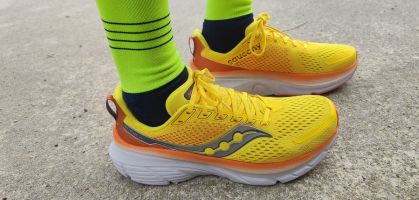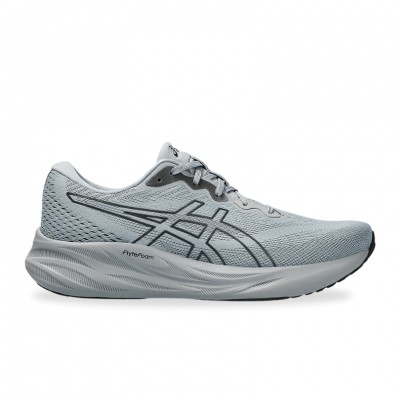The way we breathe when we run is, although it may not seem like it, a critical aspect that directly influences the performance, energy efficiency and overall health of runners. At RUNNEA, we want to explain the importance of conscious breathing during running, we will compare nasal and mouth breathing, and we will provide recommendations based on scientific studies to optimize your breathing technique.
Not sure which shoe to choose?
In a few simple steps we help you to choose the ideal running shoe for you.
GO TO THE RECOMMENDER
Why is the type of breathing important when running?
Effective breathing is vital in the practice of physical exercise and especially in endurance sports as it supplies oxygen to the muscles, essential for the production of aerobic energy. According to a study published in the Journal of Applied Physiology, adequate oxygenation of the muscles during prolonged exercise helps maintain optimal performance and delays fatigue. In addition, rhythmic and controlled breathing can positively influence running economy, as indicated by research in the European Journal of Sport Science. This translates into a more efficient use of energy to maintain a steady running pace. In addition, proper breathing helps regulate heart rate and reduces the risk of hyperventilation, according to the "International Journal of Sports Physiology and Performance."
Mouth vs. nasal breathing during running
Mouth breathing allows for greater airflow, which is crucial during high-intensity efforts. However, it lacks the ability to filter and humidify air, which can lead to respiratory irritation and less efficient oxygen uptake, according to several studies published by the International Journal of Environmental Research and Public Health. On the other hand, nasal breathing, despite providing a more limited airflow, offers significant advantages. Air inhaled through the nose is filtered, warmed and humidified, protecting the lungs and improving the quality of inhaled air. A study in the Journal of Applied Physiology found that nasal breathing increases nitric oxide levels, improving oxygen uptake and blood circulation. In addition, nasal breathing can promote a calmer and more focused state of mind, reducing heart rate and improving focus during running.
Mouth Breathing:
Advantages:
- Increased airflow: Mouth breathing allows faster airflow and in greater quantity, which is crucial during high-intensity efforts, such as sprints or short, fast runs. This technique makes it easier to quickly meet the high oxygen demand required in these cases.
- Better for intense efforts: A study published in the "Journal of Sports Science & Medicine" suggests that during high-intensity exercise, mouth breathing may be more efficient in maintaining adequate ventilation and meeting the body's metabolic demands.
Disadvantages:
- Lack of filtration: When breathing through the mouth, air is not filtered in the same way as when breathing through the nose, which can increase the risk of inhaling particulate pollutants and cause airway irritation.
- Can cause dryness: Mouth breathing can lead to increased moisture loss, causing dryness in the mouth and throat, which could be uncomfortable during long runs.
Nasal breathing
Advantages:
- Air filtration and humidification: when breathing through the nose, air is filtered, warmed and humidified before reaching the lungs. This not only reduces the risk of respiratory irritation, but can also improve the quality of oxygen absorbed.
- Increased nitric oxide: Nasal breathing increases nitric oxide levels in the body, a key factor in improving circulation and oxygen absorption, as demonstrated in a study in the Journal of Applied Physiology.
- Improves running economy: According to research, nasal breathing can improve running economy, allowing runners to sustain their effort with less energy expenditure.
Disadvantages:
- Limited airflow: The major limitation of nasal breathing is its inability to meet high oxygen demands during high-intensity exercise due to its more restricted airflow.
- Difficulty during intense efforts: Runners may find it difficult to maintain exclusively nasal breathing during intense exercise, especially those unaccustomed to this technique.
Should you breathe through your nose when running?
The choice between mouth breathing and nasal breathing during running has been a topic of debate among runners and sports medicine professionals. Both forms of breathing have their advantages and disadvantages, and the optimal choice may depend on several factors, including exercise intensity, environmental conditions, and individual runner characteristics.
Breathing through the nose while running is beneficial in terms of efficiency and respiratory protection, particularly in low- to moderate-intensity efforts. According to a study in the Journal of Sports Science & Medicine, nasal breathing during low-intensity activities improves oxygen efficiency and can help maintain a lower heart rate.
For high-intensity efforts, where oxygen demand is higher, mouth breathing may be necessary. However, a combination of both techniques may be more effective, allowing a higher oxygen intake while maintaining the quality of the inhaled air. A study in the Scandinavian Journal of Medicine & Science in Sports suggests that this combination may be optimal for maintaining the balance between oxygen requirement and respiratory protection.
How to get started with nasal breathing during running
To incorporate nasal breathing into your running routine, start with non-running breathing exercises. Deep breathing techniques and meditation can help improve nasal capacity. Gradually integrate nasal breathing into your workouts, starting with light runs and increasing intensity. A study in the International Journal of Yoga suggests that practices such as Pranayama can increase lung capacity and nasal breathing efficiency. In addition, exercises to strengthen the diaphragm and improve lung capacity may be helpful, as highlighted in a study in the Journal of Strength and Conditioning Research. These exercises improve diaphragm strength, which is essential for efficient nasal breathing during running.
The choice between nasal and mouth breathing in running should be personalized, based on exercise intensity, environmental conditions and personal preferences. Understanding and practicing both techniques can significantly improve performance and efficiency. Experimentation and adaptation are key to finding the optimal breathing technique for each runner. Conscious and controlled breathing is an essential component of running training, with a direct impact on efficiency, performance and overall health of the athlete.
Read more news about: Running News





















